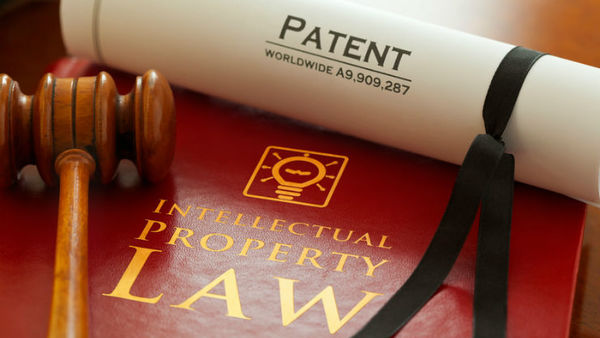Written by Jyoti Choudhary, pursuing Diploma in Advanced Contract Drafting, Negotiation and Dispute Resolution offered by Lawsikho as part of her coursework. Jyoti is working with John Deere India Pvt,Pune.
Introduction
A Patent is an official license to own, assign or sell the invention for a certain period of time, which is subject to renewal. An inventor/s can obtain the patent specifications by filing a patent application at the Patent Office. According to Section 9 of the Patent Act, 1970 (hereinafter the ‘Act’), there exist two types of patent specifications,
- Provisional Patent Specifications
- Complete Patent Specifications
What is Provisional Patent?
A provisional patent application is a preliminary application to be filed by an inventor, who has an unfinished invention and whereby wants to retain the right of entitlement or ownership of the invention against potential infringers. An inventor can secure the invention by primarily filing a provisional application at the Patent Office, followed by application of complete patent specifications. The provisional patent if granted, will be valid for 12 months from the date of filing of the patent application.
By filing a provisional patent application, an inventor or applicant gets the priority or early filing date to register the invention as a non-provisional patent without any interference.
Implication of Provisional Patent
The provisional applications are very useful tool in patent management because of the minimum cost and simplicity. The invention has to go through the patent check, which confirms that the invention is original and there is no existing patent similar to the invention. Once granted by the Patent Office, the applicant/inventor gets a year to preserve the invention without any interference. It gives the inventor the comfort and ease to complete the invention and file for the non-provisional patent application.
Who can file for the provisional patent application?
According to section 6 of the Act, the patent application can be filed by any person, who claims the idea to be original and true, and the idea has not been patented by another applicant. It can also be filed by the legal representative of any deceased person who was entitled to make the patent application immediately before his demise.
Who owns the patent? How is the ownership determined?
As discussed above, the patent can be owned by anyone who applies for it, provisional or non-provisional and paid the government fees. By filing for provisional or non-provisional application, the applicant or inventor secures the right of ownership of the patent.
In case of ownership rights of the patent of an employee, it was observed by the Bombay High Court that an employee can claim the right of ownership of invention if the invention was not a part of the employment or part of the job role of an employee.
In Darius Rutton Kavasmaneck v Gharda Chemicals Ltd & ors (2014) SCC Online Bom 1851, the High Court held that the principal employer did not owe the right of ownership on the invention of managing director, as the invention was not a part of the scope of work or instructed by the employer during working hours. Herein, the learned Court applied the test of ‘duty of intent’.
Also, in Neetu Singh v. Rajiv Saumitra, it was observed that the Plaintiff was working as a Director of Defendant Company and Defendants had failed to establish that Plaintiff/Director made the invention as part of employment and thereby granting injunction in favour of the Plaintiff/Director.
Tips for filing Provisional Patent Applications
The inventor or Applicant should remember following aspects before or after applying:
- An inventor should keep in mind that this application is a primary step towards non-provisional patent specifications. This doesn’t provide long-term ownership of patents, until filed for non-provisional patent specifications.
- Disclosure of unfinished invention should be equivalent to finalize the patent. The provisional patent shall be based on and substantially similar to complete patent specifications.
- The registration of the patent should be done within the prescribed time period of twelve months from the date of filing of the provisional patent application. Otherwise, it will be considered as abandoned.
- Post application of provisional patent, an inventor may not be allowed to make an amendment to the invention. The scope of a claim will not be changed or increased.
- If the applicant wishes to withdraw the application in future, the applicant can withdraw three months prior to the completion of 18 months from the filing date of the provisional application.
How long does it take to get the patent approved in India?
Firstly, the inventor is supposed to do a patent search to see whether the invention has been registered or not. If no one has registered, an inventor can approach a patent attorney for drafting the provisional application. Along with the same, government fees are to be paid. If no one raises any objection within 12 months of validity, the inventor needs to file for the complete patent application by the end of the 15th month from the date of filing of provisional patent application. Thereafter, patent certification will be issued. Hence, the entire procedure will take one and a half year from the date the inventor approaches the attorney.
In Snehlata C. Gupte vs. Union of India & Ors. (W.P. (C) No 3516 and 3517 of 2007), Delhi High Court observed that a patent shall be granted to the applicant, once it is found that the application has not been refused in pre-grant opposition or otherwise is not found in contravention of the provisions of this Act. The Court had put emphasis on the section 43 of the Act.
The application for the provisional patent will be denied, on account of non-completion of specifications. This was also discussed in the landmark judgment passed by the SC in the case of Novartis v. Union of India (2013) 6 SCC 1, wherein the SC rejected the patent application made by the applicant on the ground that the mere discovery of an existing drug would not amount to an invention. In the instant case, the applicant made a patent application for the invention, which was already existed as a granted patent. For filing of patent application, the idea or invention has to be true and original, which was not complied by the applicant in the present case. Hence, the application for the patent was rejected by the learned Court.
Merits and Demerits of filing provisional patent
Merits:
- An Inventor/Applicant filing for the provisional patent secures the right of entitlement to a priority date with validity of 12 months to complete the invention.
- By filing a provisional application, the applicant gets an early filing date. The invention cannot be claimed by potential infringers. Also, the inventor acquires extra time span of twelve months plus time period of the non-provisional patent.
- When an inventor has an unfinished idea, which is almost complete and the same can be registered with provisional patent. This gives a sense of protection to an inventor from the infringers.
- Cost Effective: The Applicant can file the provisional patent at a very low cost. The primary application costs lower than the non-provisional application. Hence, the provisional patent applications are more preferable in the market.
- There are fewer formal necessities for filing as compared to the filing fees and necessities for the non-provisional patents.
- By filing an invention as a provisional patent, the Applicant will be able to claim the ownership of an idea, which has not been objected by another applicant.
- If not objected, the applicant can use the term patent pending against potential infringers, before filing the complete patent specifications.
Demerits:
- Interim Protection: Provisional patents are valid only for the limited period, i.e., 12 months until the Applicants file for the application for complete patent specifications. This implies the abandonment of unfinished invention, if not filed for complete patent application.
- By filing for the provisional patents, an inventor/applicant ends up paying double fees to accomplish an initial non-provisional filing. This causes a small increase in overall cost.
- The disclosure of the unfinished invention should match the level of complete patent specification. The provisional specification should be substantially similar to the complete specification.
- Sometimes, filing of provisional application may result in loss of trade secret. To safeguard themselves from future dispute, the applicant can ask the attorney to sign a Non-Disclosure Agreement (NDA), to maintain the confidentiality of the idea.
- The provisional patent holders are not allowed to institute a suit against infringers until the patent is granted by the Patent Office.
- The applicant can withdraw the application 3 months before completion of 18 months in order to avoid publication. But this will not apply to the applicants applied for early publication.
Is it useful to file a provisional patent in India?
A provisional patent application is a very efficient tool for the patent registration. Filing of the provisional patent application is cheaper than the non-provisional patent and has fewer legal formalities. Provisional application is simple and secure option for the applicant. This might increase the overall cost of the patent publication, but it’s considered to be a more preferred option by the inventors. The applicant gains more time to finish the nearly completed invention and make a final publication. At the option of the applicant, disclosure of the idea can be done with the safeguard of non-disclosure agreement. The applicant can also opt for an early publication of the idea, and this includes the options of withdrawal of application before completion of 18 months. So, as per the priority and preference of the applicant, one can choose any of the applications.
Students of Lawsikho courses regularly produce writing assignments and work on practical exercises as a part of their coursework and develop themselves in real-life practical skills.












